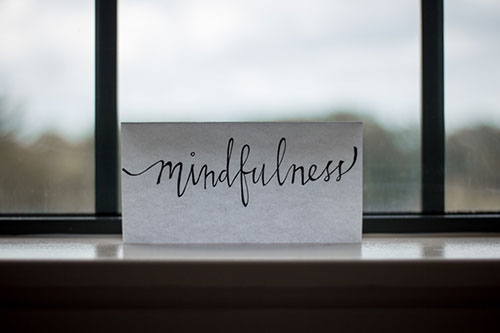
November 12, 2015
By Natsumi Sawada, PhD, Psychologist
Guest post from the Mindfulness and Meditation Blog blog.natsumisawada.com
Mindfulness is a particular state of awareness cultivated through intentional practice.
WHAT IS PARTICULAR ABOUT THIS STATE OF AWARENESS?
1. It is focused on the present moment.
Our awareness is usually caught up in thoughts about the past or the future. We therefore cruise through life on autopilot unaware of what’s actually happening now in our minds, bodies, and all around us. Sometimes being caught up in thoughts about the past or future can be helpful because it allows us to remember, learn, and plan.
However, the downside is:
1) We miss out on what’s actually happening now.
2) We get caught in disappointment about the past or worry about the future, which can lead to depression or anxiety. We don’t need to actually experience threatening events to be scared or stressed – we can simply imagine past or future threats.
Practicing mindfulness means intentionally bringing awareness to the present moment over and over again. It’s about noticing what’s here now.
There is a sense in which all that actually exists is the present. Both the past and the future only exist now as thoughts, concepts, or stories.
The present moment is filled with joy and happiness. If you are attentive, you will see it. – Thích Nhất Hạnh
2. It is embodied and sensory.
Mindfulness is a type of knowing through awareness of what we are experiencing with all of the senses (smell, touch, hearing, sight, taste, proprioception, interoception) as well as the mind.
We are often caught up in experiencing the world almost exclusively through our thoughts/intellect/concepts:
Example: This is delicious, this tastes horrible, she’s beautiful, he’s stylish, this room is ugly, he’s talented, I like this, this is not as good as that, etc.
However, we don’t spend much time experiencing what is actually coming to us through our senses.
Example: Experiencing the texture of fabric, noticing light hitting a particular object, vibrations hitting our eardrums, the rise and fall of the pitch in a piece of music, the rush of an emotion bubbling up inside our chest.
When we practice mindfulness we cultivate awareness of present moment experience though all of our senses at a pre-conceptual level. Sometimes I like to ask myself, how would I experience and get to know about a particular experience if I were a dog or a small child without concepts such as rude, ugly, stylish, and beautiful? What is here for my senses to experience?
Out beyond ideas of wrongdoing and rightdoing, there is a field. I’ll meet you there. – Rumi
3. It can be characterized by five key attitudes.
a) Non-striving/acceptance:This means noticing subtle forms of resistance such as wishing things were different or tensing up or bracing against a difficult experience and intentionally and repeatedly cultivating acceptance and a willingness to be with what is happening by coming back to noticing, acknowledging, and experiencing how things are in this moment at a sensory level.
Example: Becoming aware that you are rushing though a task you don’t like and telling yourself how great it will be to be done. Then, choosing to let go of thinking and gently redirecting awareness to the sensations in your body allowing yourself to open up to these. Then, noticing the information coming through all of your senses in this very moment.
b) Non-judgment/beginner’s mind: This means noticing when we’re intellectualizing, judging, conceptualizing, or telling “stories” about something based on our past experience and instead choosing to bring our awareness back to the present and to explore what we are experiencing, with curiosity, as if we are experiencing it for the first time.
Example: Noticing you are telling yourself a story about (i.e. thinking about) what it will be like to do something you have experienced before (e.g. meeting a certain person, eating your favorite meal, experiencing a particular emotion) and choosing to come back to explore this with curiosity, using your senses in this very moment.
c) Letting go: This means noticing when your mind is getting carried away with stories or thoughts about how things are, were, or should be. Letting go means intentionally coming back to the present and your body even when these stories are very compelling (they usually are).
d) Non-doing/being:This goes hand-in-hand with acceptance. We are almost always trying to do, change, or achieve something. Mindfulness is about intentionally being with what is here now. Simply being.
e) Patience/kindness/compassion:When your mind is carried away with stories, thoughts, or judgments acknowledging that this is simply what all minds do. Gently, kindly, and compassionately bringing your mind back to the present over and over and over again. Mindfulness does not imply constant, fixed awareness of the present. It is the intentional and gentle act of bringing your awareness back.
For more on mindfulness check out this introductory talk by Jon Kabat-Zinn (at Google):